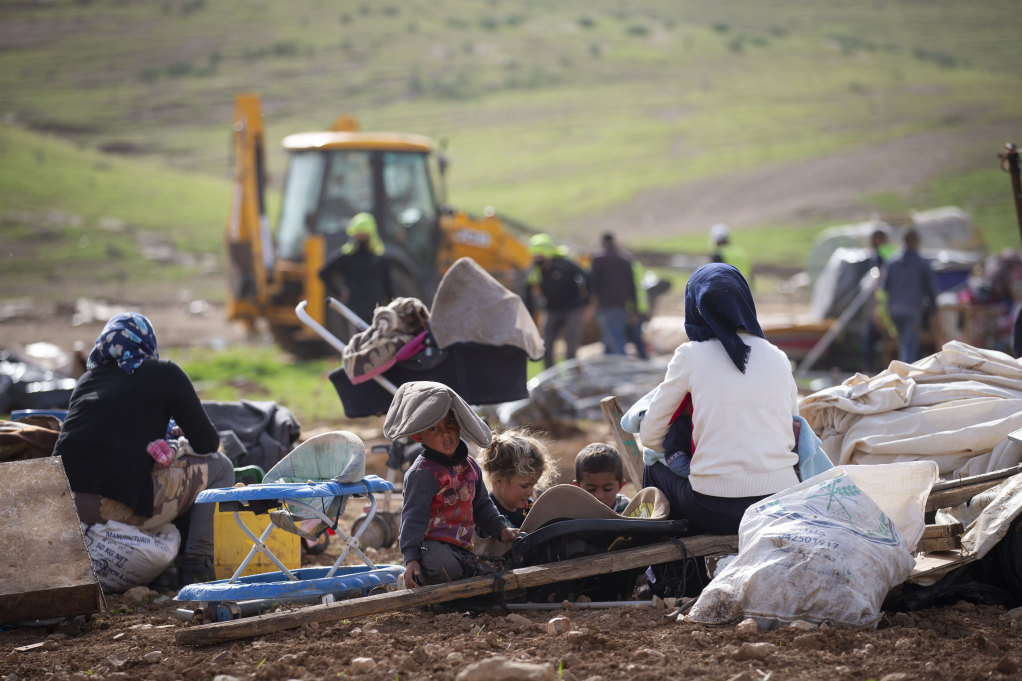There are dirt patches where there used to be makeshift homes; tent poles stacked like firewood; fencing and scrap metal scattered across a desert valley greened by winter rain; a cold fire pit and a pile of kitchen essentials where a cooking tent once stood.
This is what remains of the herding community of Khirbet Humsu in the occupied West Bank after Israeli forces demolished it for the third time in as many months.
On Wednesday, just minutes after the army left, Palestinian residents were at work repairing their fences and hoping to gather their sheep before dark. They were fearful the army might return the next day.
“We build it up and they tear it down,” said Waleed Abu al-Kbash as he stretched fencing between two posts. “Where am I supposed to go? I have a thousand head of sheep.”
Israel captured the West Bank in the 1967 war, but the Palestinians want it to form the main part of their future state.
Khirbet Humsu, perched on the rolling highlands above the Jordan Valley, is part of the 60 per cent of the West Bank known as Area C, which is under full Israeli military control as part of interim peace agreements from the 1990s.
Israel planned to annex the Jordan Valley and other parts of the occupied West Bank last year after getting a green light from the US administration under Donald Trump, but it put annexation on hold as part of a US-brokered normalisation agreement with the United Arab Emirates.
Read the article by Joseph Krauss in The Sydney Morning Herald.

